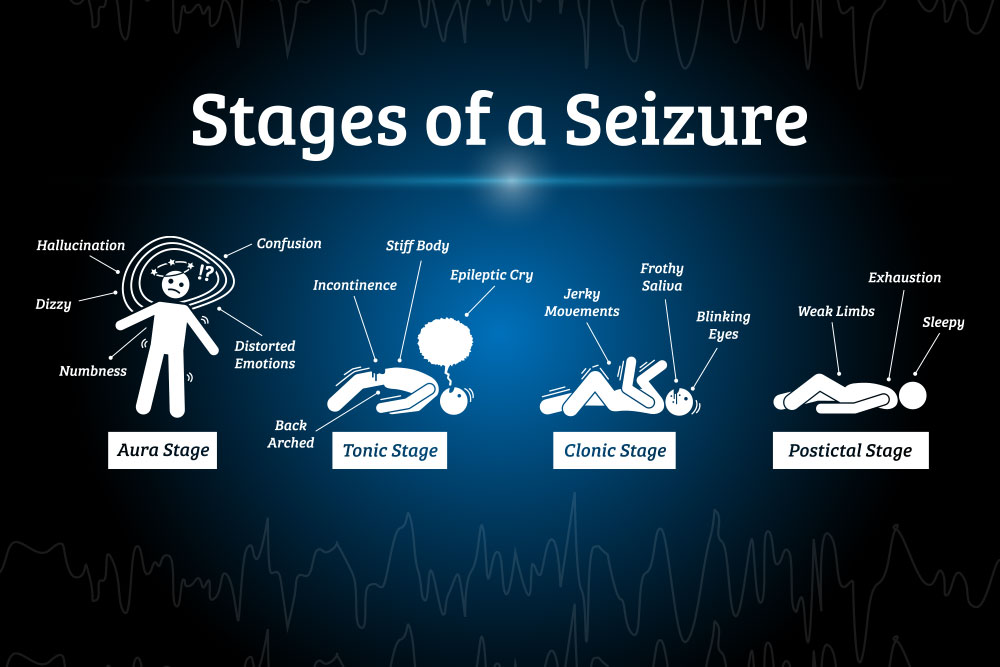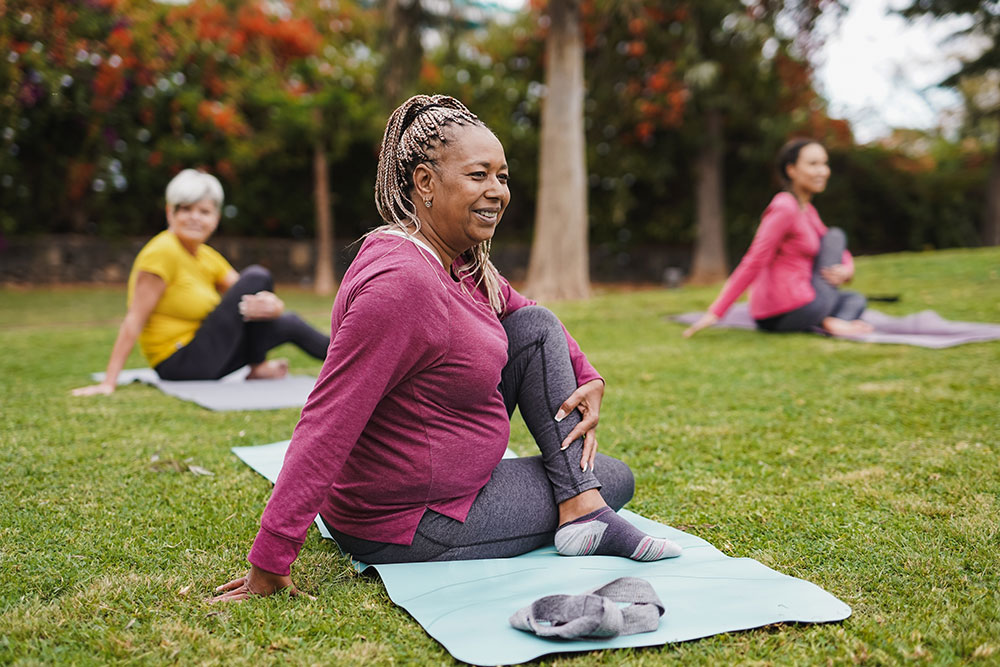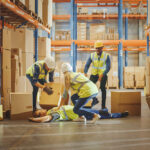
Epilepsy is one of the most common neurological conditions in the world. In the UK alone, around 600,000 people live with epilepsy – or roughly 1 in every 103 people.
Every person diagnosed with epilepsy has a different experience, but all go through some form of seizure. Epileptic seizures themselves are also varied, with a range of symptoms.
But sadly, seizures do play a part in some of the 21 epilepsy-related deaths in the UK every week.
By knowing how to administer seizure first aid, you’ll be calm, ready to respond and potentially be the difference between life and death for someone having an epileptic seizure.
Read our guide to learn how to help should you ever witness a friend, colleague or member of the public suffer a seizure.
What is Epilepsy?
Epilepsy is a disorder that affects a person’s brain and causes frequent seizures. Seizures happen when bursts of electrical energy disrupt how the brain functions normally. Outside of these episodes, brain function is typical for people with epilepsy, which means the condition is often only diagnosed after someone has suffered two or more seizures.

Diagnosis often happens during childhood, but epilepsy can sometimes go undetected until much later.
The condition can sometimes be controlled with medication or will get better over time. Still, a person diagnosed with epilepsy will generally live with it for life.
Part of living with epilepsy is living with the different seizures it causes and being mindful of the early warning signs.
What are the Warning Signs of a Seizure?
Seizures can come on rapidly and the warning signs can differ from person to person. This makes it difficult the anticipate when you might need to assist someone.
Some people with epilepsy report feeling certain sensations before an epileptic seizure. These sensations are sometimes referred to as ‘auras’ by those who experience them. The aura is unusual electrical activity starting in one part of the brain before spreading and triggering a seizure.
Commonly reported auras include:
- Smelling something unusual
- A bitter or acidic taste in the mouth
- Blurred vision
- Hallucinations or flashes of light
- A buzzing in the ears
- A feeling of nausea or an upset stomach
- Tingling sensations in the limbs or extremities
- Pain in the head, arms or legs
- A sense of odd familiarity or Deja-vu
Only around 65% of people with epilepsy report auras before a seizure, however. So, you can’t rely on them as an early indicator.
A significant number of seizures come on rapidly with minimal warning signs. But there are a few more general things you can look out for. The most common symptoms are:
- Losing awareness or becoming unresponsive
- Rapid or uncontrollable blinking
- Dizziness
- Confusion
- Shaking or jerking limbs
This list of early symptoms is not exhaustive and won’t apply to every seizure. Each person with epilepsy can suffer from multiple attacks, each a unique experience.
It’s possible you won’t know someone is having a seizure until it’s started.
Types of Seizure
Seizures differ depending on where the burst of electrical energy happens in the brain.
Some people diagnosed with epilepsy only experience one type of seizure, whereas others experience multiple types. Some seizures are barely noticeable while others cause a total loss of consciousness or control.
But when most people think of an epileptic seizure, they’re picturing a full-body, tonic-clonic seizure.
Because of their seriousness, this guide focuses on tonic-clonic seizures’ signs, symptoms and treatment. A lot of the advice is also relevant for other types of seizure.
What Happens During a Seizure

During a tonic-clonic seizure, patients will go through two phases.
Tonic Phase
- The patient will lose consciousness
- Their muscles will go stiff
- It might sound as if the patient is crying out
- The patient may bite their tongue or the inside of their mouth
Clonic Phase
- The patient’s limbs jerk quickly and rhythmically
- The patient might lose control of their bladder/bowels
- The patient’s breathing might be affected, resulting in them going blue around the mouth
Most seizures of this type last between one to three minutes and there’s a potential risk of injury depending on where and when it happens. If you ever witness a tonic-clonic seizure, there are steps you can take to minimise distress and prevent harm.
How to Do Seizure First Aid
As with any emergency, you must remain calm. Learning the following steps will help prepare you to deliver seizure first aid at the right time and in order.
A tonic-clonic seizure causes the patient to lose consciousness and control of their body so you must follow these steps:
- Take note of your surroundings and identify any potential hazards – moving traffic or glass objects, for example
- Remove the hazards if necessary, but only move the patient if they’re in immediate danger
- Cushion the patient’s head – rolled-up clothing works well
- Check the patient for an epilepsy identity card or jewellery – it may give you more information about their condition and what to do to help
- Time how long the seizure lasts – this is critical so you know if an ambulance is needed or not
- Put the patient in the recovery position after the seizure has stopped
- Stay with the patient – it’s unlikely you’ll need emergency assistance, so don’t leave the scene
- Remain calm and reassure the patient
You should also be prepared to reassure or explain the situation to bystanders. Some people may find witnessing the event upsetting or not understanding it, even finding it funny. These responses might distress the patient even further after they’ve recovered. Remind bystanders that epilepsy is a common condition and almost everyone recovers from a seizure relatively quickly, with the right treatment.
The epilepsy charity, Epilepsy Action, produced this short video covering the essentials of seizure first aid.
What Not to Do During a Seizure
In a high-pressure situation, people often rely on instinct. But only some things that feel helpful will actually benefit the patient. In some cases, it is harmful.
It’s essential that you never:
- Restrain the patient
- Put anything in their mouth – a patient may bite their tongue but they cannot swallow or choke on it; anything in their mouth is just another potential cause of injury
- Move them unless they are in immediate danger
- Give them anything to drink or eat until they are fully recovered
- Attempt to rouse them from unconsciousness
- Attempt to resuscitate the patient or perform CPR – most patients will begin breathing normally on their own
Should I Call an Ambulance?
You’ll rarely need to contact emergency services as most patients recover independently from a seizure.
However, you should definitely call an ambulance if:
- The seizure lasts longer than five minutes – this is why it’s important to time how long the seizure lasts
- The patient has multiple seizures in a row
- The patient is seriously injured during the seizure
- The patient still has difficulty breathing after recovering from the seizure
- You know for a fact that this is the patient’s first-ever seizure
What to Do After a Seizure
The most important thing is to stay with the patient until you’re confident they’ve fully recovered. Some people might not even know they experienced a seizure or may be disorientated. Others may suffer multiple seizures in a row. Remain with the patient until they breathe, speak normally and are totally responsive.
Until you’re confident they’re okay, help keep the patient calm and remain vigilant for the signs of further seizures.
Where to Learn More About First Aid
Seizures can happen anywhere at any time , just like accidents. You can never predict when someone needs first aid but you can learn how to help.
Our First Aid Training Courses cover the most common workplace injuries. You’ll learn how to treat electric shocks, cuts, burns and administer CPR.
And while the online course is not a suitable replacement for in-person training, it can help prepare you for various workplace emergencies. Without sufficient training and knowledge, it’s easy to panic and fail to respond appropriately, prolonging the victim’s distress or putting them at greater risk. Keeping emergency first aid procedures fresh in your mind will help prepare you to help those around you.
About the author(s)






















































































































































































































































































































































































































































































































































